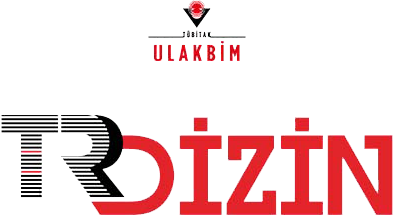
Bu eser Creative Commons Alıntı-GayriTicari-Türetilemez 4.0 Uluslararası Lisansı ile lisanslanmıştır.













Determination of Anti-HCV Scanning Test cut-off value by HCV-RNA and Line Immunoassay Test
Alper SARIBAŞ1, Altan AKSOY21Health Ministry Of Public Health Department Of Microbiology Reference Laboratories And Biological Products Department, National Tuberculosis Reference Laboratory, Ankara, Turkey2Ankara Numune Training And Research Hospital, Microbiology Laboratory, Ankara, Turkey
INTRODUCTION: In this study, we aimed to determine optimal anti- HCV cut-off value in our country to reduce anti- HCV false positive test results and prevent unnecessary additional testing.
METHODS: The study group consisted of samples of 202 anti- HCV positive patients. Detection of HCV antibodies was performed with Architect anti- HCV kits and samples with ≥ 1 S/CO were considered as reactive. Samples were also studied with HCV- RNA and Line Immunoassay (LIA) tests.
RESULTS: The anti- HCV (S/CO) levels of 84 patients (41.6 %) were between 1 and 5, 29 patients (14.4 %) were between 5 and 10, 89 patients (44.1 %) were more than 10. Among anti-HCV positive 202 patients, total number of HCV-RNA positive patients and total number of LIA positive patients were 60 (29.7 %) and 124 (61.4 %), respectively. The highest rate of anti- HCV seropositivity (73.8 %) was found in the above 40 years age group. The median of the anti- HCV levels (3.2 S/CO) of the HCV- RNA negative patients was significantly lower than the median of the anti- HCV levels (13.7 S/CO) of the HCV- RNA positive patients. The difference between the median of anti- HCV levels of LIA negative patients (2.1 S/CO) and the median of anti- HCV levels of the LIA positive patients (13.3 S/CO) was statistically significant. By ROC analysis, the best cut-off value forthe Architect anti- HCV test was determined as 7.8 S/CO and with this calculated cut-off value, sensitivity (98.3%); specificity (68.3%); positive (56.7%) and negative (99%); predictive value sandt he accuracy (77.2%) were calculated.
DISCUSSION AND CONCLUSION: Anti- HCV seropositivity increases significantly with age. HCV- RNA and LIA positivity generally do not accompany the results minimally above anti- HCV cut-off values. A few samples will require verification if the cut- off value for Architect anti-HCV screening test is determined as 7.8.
Anti-HCV tarama testi eşik değerinin HCV-RNA ve Line Immunoassay testi ile belirlenmesi
Alper SARIBAŞ1, Altan AKSOY21Sağlık Bakanlığı Halk Sağlığı Genel Müdürlüğü Mikrobiyoloji Referans Laboratuarları Ve Biyolojik Ürünler Dairesi Başkanlığı, Ulusal Tüberküloz Referans Laboratuarı, Ankara2Ankara Numune Eğitim Ve Araştırma Hastanesi, Mikrobiyoloji Laboratuvarı, Ankara
GİRİŞ ve AMAÇ: Anti- HCV yalancı pozitif test sonuçlarını azaltabilmek ve gereksiz ek test isteminin önüne geçebilmek için ülkemize en uygun anti- HCV eşik değerini tespit etmek amaçlanmıştır.
YÖNTEM ve GEREÇLER: Toplam 202 hastaya ait anti- HCV pozitif örnek çalışmaya dahil edilmiştir. HCV antikorlarının tespiti için Architect anti- HCV kitleri kullanılmıştır ve ≥ 1 kesme noktası (S/CO) değerine sahip numuneler reaktif kabul edilmiştir. Ayrıca örneklerin HCV- RNA ve Line immunoassay testleri (LIA) çalışılmıştır.
BULGULAR: Anti- HCV pozitif 202 örneğin 60 (%29,7)’ı HCV- RNA pozitif ve 124 (%61,4)’ünde LIA pozitif bulunmuştur. Anti- HCV S/CO düzeyi 1- 5 arasında olan 84 (%41,6), 5- 10 arasında olan 29 (%14,4) ve 10’un üstünde olan 89 (44,1) kişi çalışmaya alınmıştır. Anti- HCV seropozitifliği açısından yaş grupları arasında en yüksek oran 40 yaş üzeri (%73,8) grupta tespit edilmiştir. HCV- RNA negatif olan grubun medyan anti- HCV düzeyi (3,2), HCV- RNA pozitif olan grubun medyan anti- HCV düzeyine (13,7) göre anlamlı oranda daha düşük bulunmuştur. LIA pozitif olan grubun medyan anti- HCV düzeyi (13,3) ile karşılaştırıldığında LIA negatif olan grup (2,1) arasındaki fark istatistiksel olarak anlamlı bulunmuştur. ROC analizi sonucunda, Architect anti- HCV testi için en iyi S/CO değeri 7,8 olarak belirlenmiştir ve bu durumda duyarlılık %98,3, özgüllük %68,3, pozitif tahmini değer %56,7, negatif tahmini değer %99 ve doğruluk %77,2 olarak hesaplanmıştır.
TARTIŞMA ve SONUÇ: Anti- HCV seropozitifliği yaş ile birlikte anlamlı oranda artmıştır. Anti- HCV eşik değerine yakın sonuçlara HCV- RNA ve LIA pozitifliği genellikle eşlik etmemiştir. Architect anti- HCV tarama testi için eşik değeri 7,8 olarak belirlendiğinde çok az örneğin doğrulama gerektireceği tespit edilmiştir.
Manuscript Language: Turkish
(2837 downloaded)


